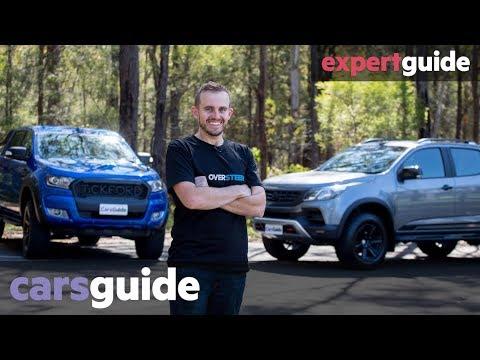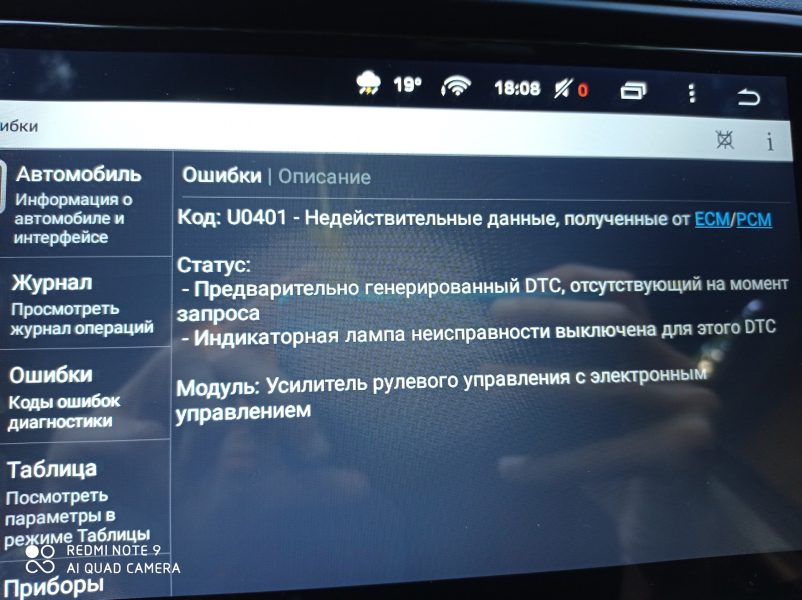
HSV SportsCat vs Tickford Ranger 2018 review
To be honest, I don't know which of the two I preferred. Both have promising and likable traits, and by the same standards, both have some issues.
Let's talk about engines first, because Ford easily wins in this department.
The 3.2-litre five-cylinder engine is the best base engine to work with, and with this setup, it certainly "improves the handling" of the Ranger, which is what Tickford was aiming for.
Turbo lag is less when starting from a standstill, and the impact is delivered further across the entire rev range. It's more powerful than the stock Ranger, that's for sure, but you have to keep in mind that all the extras that have been added affect the power-to-weight ratio, so don't expect mega performance if you specify your machine that way.
For me, just tuning the engine would be the step I would take… and to be honest, it might be the only one! This will not affect your Ford warranty, and engine performance will be greatly improved.
The transmission is also well debugged. It can get a little busy when it comes to keeping speed on the highway - instead of just working in six, it will drop to five when it's really not needed - but it's the same with any Ranger.
As for the noise? Well, not quiet. The bad news is that, despite the presence of a 2.5-inch sports exhaust system, it's not as noticeable from the cabin.
Now to another utah.
It is HSV by name, but not by nature. It would have been such a good car if the HSV had stayed true to its roots and ditched a chunky V8 under the hood. Heck, they could ask for $80,000 if they did and people would pay. Heck, I might even pay it!
Still, HSV thinks this Colorado is better on and off the road, even if it stays with a four-cylinder engine. But the powertrain - as good as it is in the regular Colorado - may not be worth the money at this price point.
Admittedly, this is still the most torquey four-cylinder diesel engine out there, and when you hit the right pedal quickly, it pushes you forward quite quickly. But there is still a lag to contend with and no more strength to overcome the extra weight of the added bits and pieces.
But the transmission handles the growl of the engine relatively well, shifting gear ratios without too much fuss. It can be a bit aggressive when it comes to gradient braking (shifting back to use engine braking when descending a hill), but you can get used to it.
The SportsCat has definitely gone through some major suspension changes. The MTV dampers change things up for the better, perfectly taming the typical stiffness of an empty dual cab. It was definitely more enjoyable to drive on city roads, highways at 80 km/h, and also at freeway speeds.
The Ranger, with its heavily revised and raised suspension, was not as comfortable. This is partly due to the larger (and presumably heavier) wheels failing at road junctions, and there was unusual back and forth rocking on Sydney's main roads.
The discomfort continued in terms of the Ranger's off-road suspension, because he pretty much tried to push the inhabitants of the cabin on his seats. It just couldn't handle some of the lightly rippled tracks with the skittish rear end. In fact, he seemed tougher than the average Ranger.
The rough road riding in the HSV is similar but not as bad. It's succinct: the dampers are tuned for smoother roads, and it can be twitchy and jerky on undulating gravel. The company even redesigned the electronic stability control and it was very well suited for crawling at low speeds with low traction.
We never intended to take these two too far off the road, but it's unlikely anyone who buys one of these two utes will travel to Big Red (that's a massive sand dune on the edge of the Simpson). Desert). But this is MO for this kind of utes - lots of possibilities, but usually with an owner who won't explore them. I can understand that - I wouldn't go out of my way to scratch a $70 car!
Back on the road, the Ranger reigned supreme in terms of steering, which is an electric system that delivers effortless cornering at lower speeds, and great response and weight at pace. The HSV's steering is heavier, which makes it harder to work at low speeds, but gives good enough confidence when going at higher speeds. And both suffer from fairly poor turning circle due to their large wheel packages, but this was exacerbated on the HSV by heavier steering.
However, the HSV's biggest drawback was its brakes. On the high-end SportsCat+ model, you get AP Racing brakes that are a game-changer by the looks of things. But in the base model, the pedal feels like wood, which doesn't do much for the rider in terms of feedback and is therefore sometimes difficult to anticipate.
If you're part of the speedboat crowd (and not to mention the stereotypes, but if you want a boat like this, you probably are), you'll be happy to know that both of these trucks retain their advertised 3.5-ton brakes. . tractive effort, when towing without brakes, calculated on 750 kg.
| HSV SportsCat | Tickford Ranger | |
| Goal: | 8 | 8 |
